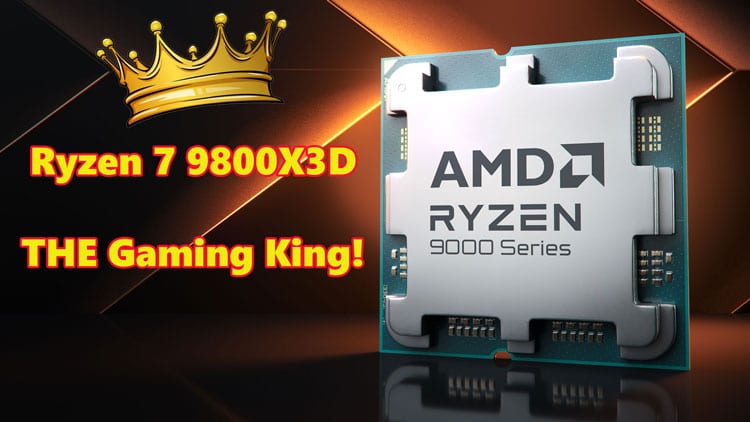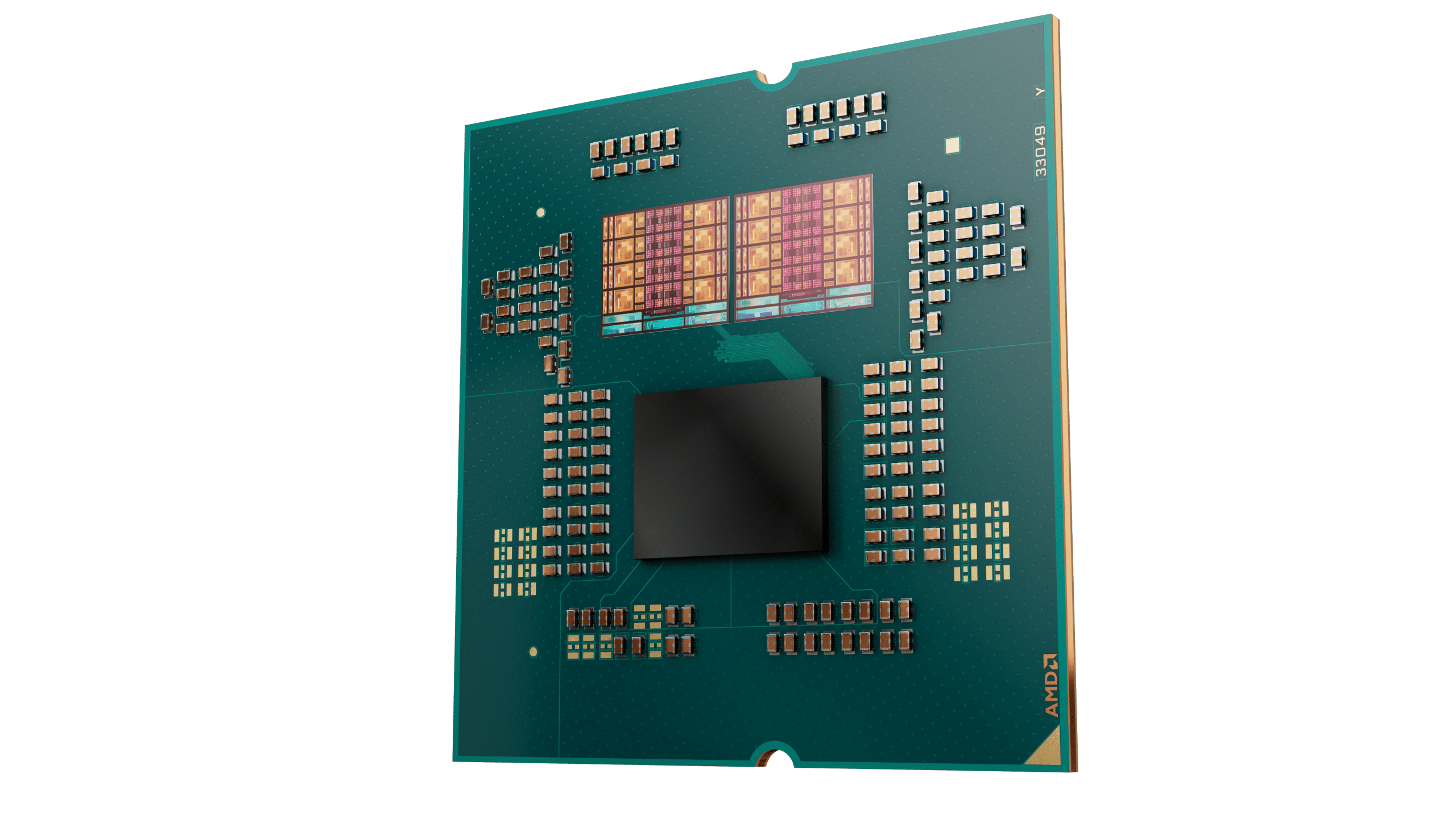The Ryzen 7 9800X3D is the fastest gaming processor available in today’s market, leaving far behind CPUs with more cores, by both AMD and Intel, thanks to its increased cache memory.
With the Ryzen 9800X3D, AMD has improved its 3D V-cache technology, allowing for even higher gaming (and not only) performance. The main difference is the location of this cache memory. Previously, it has been layered on top of the “Zen3” cores in the Ryzen 5800X3D and “Zen4” cores in the Ryzen 7000X3D processors. In the “Zen5” cores, this cache is installed below and not above the processor cores. This helps have direct contact with the cores and the heatspreader. The 3D V-cache is less sensitive to heat than the CPU cores, so it is a huge benefit to have it not blocking the cores’ direct contact with the cooling solution. AMD speaks of up to 46% better thermal resistance. With lower temperatures, you can have higher single and multi-threaded clock speeds, so the 9800X3D has a 500 MHz faster base clock and a 200 MHz faster maximum boost clock compared to the Ryzen 7 7800X3D. AMD states that the multi-threaded performance is much closer to the 9700x when configured to the 105C cTDP because the 9800X3D can fully utilize the provisioned power, unlike the 7800X3D. So, in other words, AMD states that the 9800X3D has better thermals, higher clocks, and notably better gaming and multi-threaded performance than the 7800X3D.
What you need to know about the AMD Ryzen 7 9800X3D:
- It Features eight advanced “Zen 5” cores and 16x threads to deliver exceptional performance.
- The processor offers a base clock speed of 4.7 GHz and a max boost clock of 5.2 GHz, marking the fastest speeds yet on an X3D chip.AMD has reengineered its on-chip memory solution with 2nd Gen AMD 3D V-Cache technology. The 64MB cache memory has been relocated below the processor, bringing the core complex die (CCD) closer to the cooling solution to help keep the “Zen 5” cores cooler.
- According to AMD claims, the Ryzen 7 9800X3D provides up to an average of 8% gaming performance improvement in gaming compared to the Ryzen 7 7800X3D and up to an average of 20% gaming improvement vs the Intel Core Ultra 9 285k
- It’s the first X3D processor to be fully unlocked.
- MSRP is set at $479.
Relevant reviews:
- Intel Core Ultra 9 285K CPU Review: Performance, Thermals & Power Analysis
- AMD Ryzen 9 9950x CPU Review: Performance, Thermals & Power Analysis
- AMD Ryzen 9 9900x CPU Review: Performance, Thermals & Power Analysis
- AMD Ryzen 7 9700x CPU Review: Performance, Thermals & Power Analysis
- Windows 24H2 vs. 23H2. 12x Games, More than 550 Tests – Zen 4 (Ryzen 7 7800X3D)
- AMD Ryzen 7 7800X3D Revisit: The Best Gaming CPU
- AMD Ryzen 7 7800X3D CPU Review: Performance, Thermals & Power Analysis
Specifications
The Ryzen 9000 series currently consists of five models, ranging from 6x cores and 12 threads to 16x cores and 32x threads. The TDP of the lower two models is 65W, while the three higher models have 120W and 170W TDP.
| AMD Ryzen 9 9950x | AMD Ryzen 9 9900x | AMD Ryzen 7 9800X3D | AMD Ryzen 7 9700x | AMD Ryzen 5 9600x | |
| Cores/Threads | 16/32 | 12/24 | 8/16 | 8/16 | 6/12 |
| Max Boost | 5.7 GHz | 5.6 GHz | 5.2 GHz | 5.5 GHz | 5.4 GHz |
| Base Clock | 4.3 GHz | 4.4 GHz | 4.7 GHz | 3.8 GHz | 3.9 GHz |
| L2 Cache | 16x 1MB | 12x 1MB | 8x 1MB | 8x 1MB | 6x 1MB |
| L3 Cache | 64MB | 64MB | 96MB | 32MB | 32MB |
| TDP | 170W | 120W | 120W | 65W | 65W |
| Default Socket Power (PPT) | 200W | 162W | 162W | 88W | 88W |
| Max Socket Power | 230W | ||||
| Max Current (EDC) | 225A | 180A | 180A | 150A | 150A |
| Max Current, Thermally Limited (TDC) | 160A | 120A | 120A | 75A | 75A |
| TjMax | 95°C | ||||
| Stock/Auto Voltage Range (Active Core) | 1.28 – 1.31V, max: 1.4V | ||||
| Typical Loaded Temperatures | 70-90°C | ||||
| Boost Algorithm | Precision Boost 2 | ||||
| Recommended Cooler | 240-280mm liquid (or equivalent) | Mid-frame tower cooler (or equivalent) | |||
| Max Memory Speed (Non-OC) | DDR5-5600 (2x 16GB) | ||||
| ECC Support | Enabled in-silicon, support varies by motherboard | ||||
| CCD Die Size | 70.6 mm2 | ||||
| CCD Transistor Count | 8.6 billion/per CCD (up to 2 CCDs for 17.2 billion) | ||||
| IOD Die Size | 122 mm2 | ||||
| IOD Transistor Count | 3.4 billion | ||||


